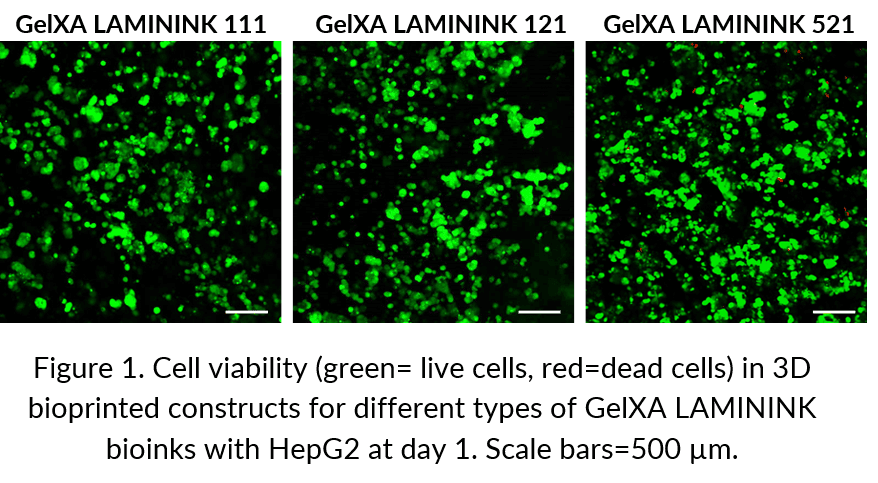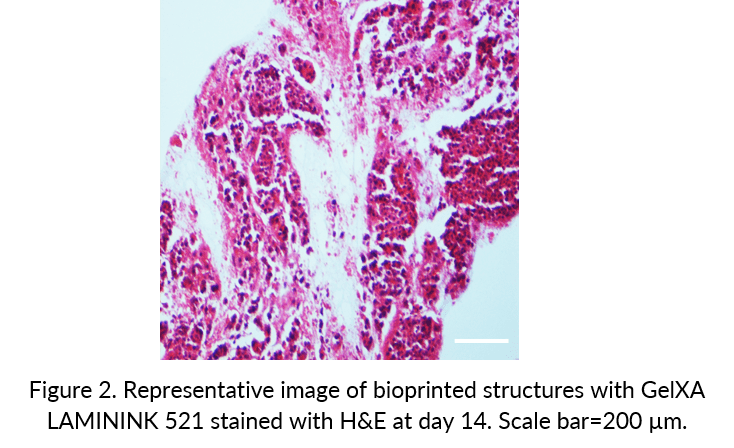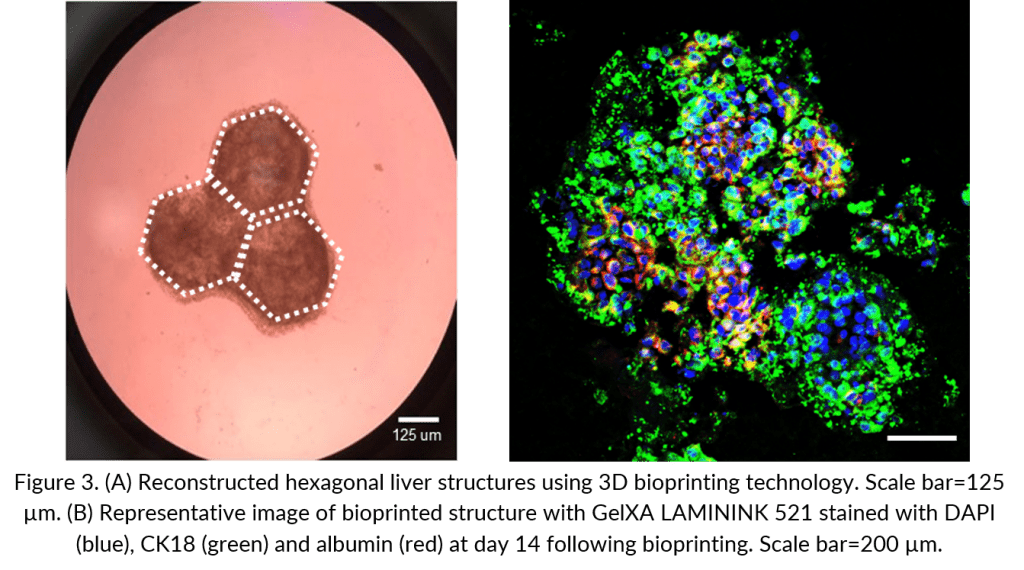3D human liver model using GelXA Laminink
IN VITRO STRUCTURAL 3D LIVER MODEL
Hyun Kyoung Kang is a Ph.D student working in Professor Kyung-Sun Kang’s laboratory in the college of Veterinary Medicine at Seoul National University, Republic of Korea. They are investigating direct reprogramming from fully differentiated somatic cells to neural stem cells. By understanding the basic role of stem cells, they are trying to apply new therapeutic approaches to inveterate diseases. Additionally, they research tissue engineering and brain/skin organoids.
Aim
This project was conducted at Seoul National University (SNU) with bioinks provided by CELLINK. The SNU team constructed a model of hepatic tissue that resembles hexagonal liver lobules using 3D bioprinting technology. The aim of this collaboration was to enhance and develop the technology of 3D tissue bioprinting, particularly creating a 3D in vitro human liver model using hepatic cells with different types of GelXA LAMININK bioinks.
The G-code to this three-layered grid structure can be found on Bioverse!
Bio X printing of HepG2
Viability

Well distributed cells

Albumin expression






